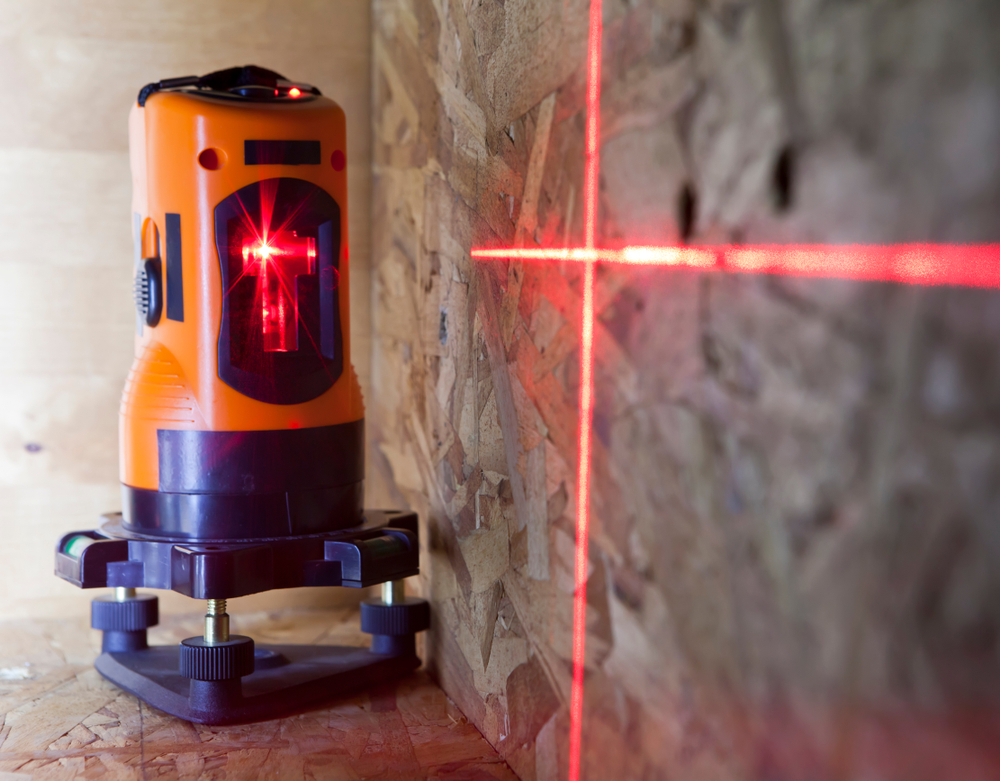Uses for Laser Levels 
A laser level is a device that emits a laser beam to take measurements of an area or plot of land. It helps the user gather data to determine the height and depth of an area, providing essential information for construction purposes. Some models can be placed on top of tripods or attached to walls and ceilings to get accurate readings from tricky-to-reach positions.
Laser levels are used in a variety of construction jobs where an accurate level layout is needed for reference. These jobs range from big projects like aligning foundations and installing sewer pipes to small details such as hanging pictures or art installations. Let's take a look at some of the uses for laser levels, and how they can make your workday more productive and efficient.
Outdoor Leveling
One of the most important functions of a construction laser is its ability to quickly and accurately gather data and check levels with incredible precision. For outdoor projects where the ground isn’t always a perfectly flat surface, laser levels can be used for just about any basic type of survey. You can use them to check the grade and elevation of a site layout, and easily check to ensure any posts, beams, fences, or decks are correctly aligned and level. These tools can also be used to check masonry alignment, or to set the grade for proper drainage and irrigation. These construction lasers are tough enough for outdoor work and can resist rough weather like scorching summer heat, frigid winter temperatures, dust, and rain. If you plan to be doing a lot of work with one of these tools, be sure to pick up an extra battery so you can work longer without having to head inside to charge.
Interior Applications
People have a good eye for detail. If a cabinet is a little bit off or a railing is slightly askew, it will be noticed. Avoid simple mistakes that can make a finished project look cheap or rushed with the precision of a laser level. These lasers aren’t just for setting up the big parts outside — they can also be used for detailed work indoors. Align shelves, cabinets, trims, windows, doors, and more with ease using a laser level. Make installing a drop ceiling a snap with quick and accurate measurements from a level that can attach to walls and ceilings. Level floors with ease and save time compared to calculating and counting every detail by hand. You can even make your laser level more useful by adding a tripod, which raises it off the ground for faster leveling of large objects such as shelves, counters, and appliances.
How To Set Grade With a Laser Level
One of the most common uses for a laser level is measuring the grade of an area to ensure the space you are working with is flat and perfectly leveled. A grade laser is a specialized laser that can determine the exact grade or slope. To measure a grade, simply place the laser and tripod in a spot that will allow it to “see” the area you want to measure. Make sure the ground is dry and the tripod is stable so it will not move or be shifted while it measures. Then just follow these 10 quick and easy steps.
1.Set up the laser level on a tripod and ensure it is firm and secure.
2.Turn on the laser level and allow it to self-level.
3.Identify the initial height of your grade (the top point).
4.Place the bottom of the leveling rod at the desired height.
5.Adjust the laser detector up or down until it is in the correct position, then secure it.
6.Identify the desired amount of fall from the top of the grade to the bottom. (We’ll use 10 inches in this example.)
7.Move the laser detector up the rod 10 inches and secure it.
8.
Move to where the bottom of the grade will be.
9.
Find level with the laser detector. You may have to dig into the ground if the desired height is below the surface of the ground.
10.Mark the spot by inserting a stick in the ground, displaying the desired height.
|
|
|